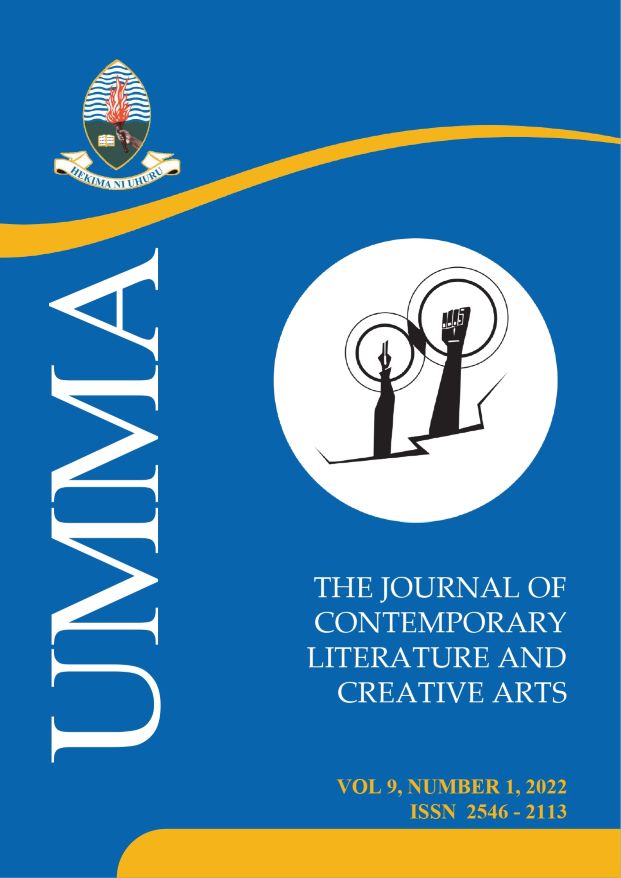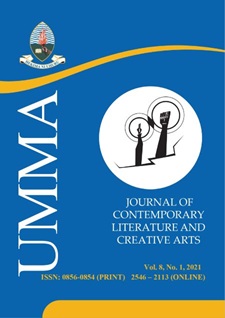Effects of Digitalization on the Three-tier Structure of Tanzania ' s Film Industry
Abstract
Abstract This paper examines the effects of digitalization on the three-tier structure of Tanzania film industry. Explicitly, the paper focuses on the period between 1990 and 2020. It follows on the presumptions that omnipresent and pervasive digital video and Internet-based technologies promoted under the theme of digitalization and underpinned by the digital revolution theory are impacting on film industries across nations. The specific drivers of the digitalization that the paper advances are digital video cameras and computer-based nonlinear editing systems applied in the production of films, Digital Versatile Discs (DVD), Online movie streaming and Video on Demand (VOD) platforms as used in distributing films and digital cinema formats and projectors in exhibition of films. Key informant interview method was used to collect qualitative data from twenty six (26) respondents. The respondents included media experts, filmmakers, camera operators, video editors and various film industry stakeholders. Other data collection methods employed included direct observation and online ethnography. The paper reveals that digitalization elicits and enhances specific changes on the three-tier structure of the Tanzania film industry. Due to the effects of digitalization the Tanzania film industry has morphed into a functional film industry. The paper concludes that in spite of the differences in its effectiveness and purposes that are grounded on issues of contexts, digitalization is more important than other determining factors such as capital formation in impacting on the transformation of the three-tier structure of the country ' s film industry.
Key words: Digitalization, Tanzania film industry, Bongo movie, Three-tier structure
References
References
Belton, J. 2004, Digital cinema: a false revolution, in Braudy, L and Cohen,
M (eds), Film Theory and Criticism: Introductory Readings (pp. 99-114), 6th ed,
Oxford Univerity Press, New York, NY.
Benghozi, P. J., and Paris, T. 2016, The cultural economy in the digital age:
a revolution in intermediation? City, Culture and Society, vol. 7, pp.75-80.
Bisschoff, L and Overbergh A. 2012, Digital as the new popular in African
cinema? Case studies from the continent, Research in African Literatures,
vol. 43, no. 4, pp. 112-127.
Dancyger, K. 1999, The world of film and video production: aesthetics and
practices, Harcourt Brace College Publishers, Fort Worth, USA.
Debjani, R. 2014, Cinema in the age of digital revolution, International
Journal of Interdisciplinary and Multidisciplinary Studies (IJIMS), vol 1, no. 4,
pp. 107 €“ 111. http://www.ijims.com.
Friedberg, A. 2004, The end of cinema: multimedia and digitalization, in
Braudy L and Cohen M (eds), Film theory and criticism: introductory
readings, 6th ed, Oxford Univerity Press, New York.
Ganz, A, and Khatib, L. 2006, Digital cinema: the transformation of film
practice and aesthetics, New Cinemas: Journal of Contemporary Film, vol. 4.,
p. 21-36.
Kang'ang ' a, M.K. 2006, A new trend in Tanzania film making: challenges and
prospects, Unpublished MA Dissertation, University of Dar es Salaam, Fine
and Performing Arts, Dar es Salaam.
Kim, K. 2020, The impact of social distancing on box-office revenue:
evidence from the COVID-19 pandemic, Journal of Quantitative Markets and
Economics. https://link.springer.com/article
Klineberg, E, and Benzecry, C. 2004, Cultural production in a digital age,
Anals of the American Academy of Political Science and Social Science, vol. 597,
pp. 6-18.
Effects of Digitalization on Three-tier Structure of Tanzania ' s Film Industry
Lichtenstein, A.L, and Sorensen, E. 2014, Country analysis: art and culture
of Tanzania. Report submitted to the Danish Center of Culture and
Development (CKU). https://www.slideshare.net/AmandaLichtenstein1
Magalla, A. 2015, Digital copyright infringement in Tanzania: Law and
practice, 10.13140/rg.2.1.5066.5681.
Mitchel, W. 2018, Report predicts key film industry changes over the Next 5
Years. https://www.screendaily.com/news/report.
Mwakalinga M. N. 2013, Political economy of cinema (video film) in
Tanzania, African Review, vol. 40, no. 1. pp. 203 €“ 217.
Orlando, K.V. (2017). Quick takes: movies & popular culture, New African
Cinema, Rutgers University Press, New Brunswich, NJ.
Rani, P. 2011, Impact of technology on creative industries: a study of indian film
industry, PhD Thesis, India,
https://eprints.manipal.edu/78288/1/search_paper_final%5B1%5D.pdf
Shule, V. 2011, Tanzania films: between innovation and incompetence, in
Kerr, D. and J. Plastow (eds) African Theatre: Media and Performance (pp. 39-
, James Currey, Woodbridge, UK. pp. 39-49.
Shule, V. 2014, Video-film production and distribution in Tanzania:
copyright infringement and piracy, African Review, vol. 41, no. 2, pp. 185-
UNCTAD. 2019, Digital Economy Report 2019. Value Creation and
Capture: Implications for Developing Countries. United Nations.
UNESCO. 2013, Emerging markets and the digitalization of the film
industry: an analysis of the 2012 UIS International Survey of Feature Film
Statistics, UNESCO Institute for Statistics, Paris.
Downloads
Published
Issue
Section
License
- Authors retain copyright and grant the journal right of first publication with the work simultaneously licensed under a Creative Commons Attribution License that allows others to share the work with an acknowledgement of the work's authorship and initial publication in this journal.
- Authors are able to enter into separate, additional contractual arrangements for the non-exclusive distribution of the journal's published version of the work (e.g., post it to an institutional repository or publish it in a book), with an acknowledgement of its initial publication in this journal.
- Authors are permitted and encouraged to post their work online (e.g., in institutional repositories or on their website) prior to and during the submission process, as it can lead to productive exchanges, as well as earlier and greater citation of published work (See The Effect of Open Access).



